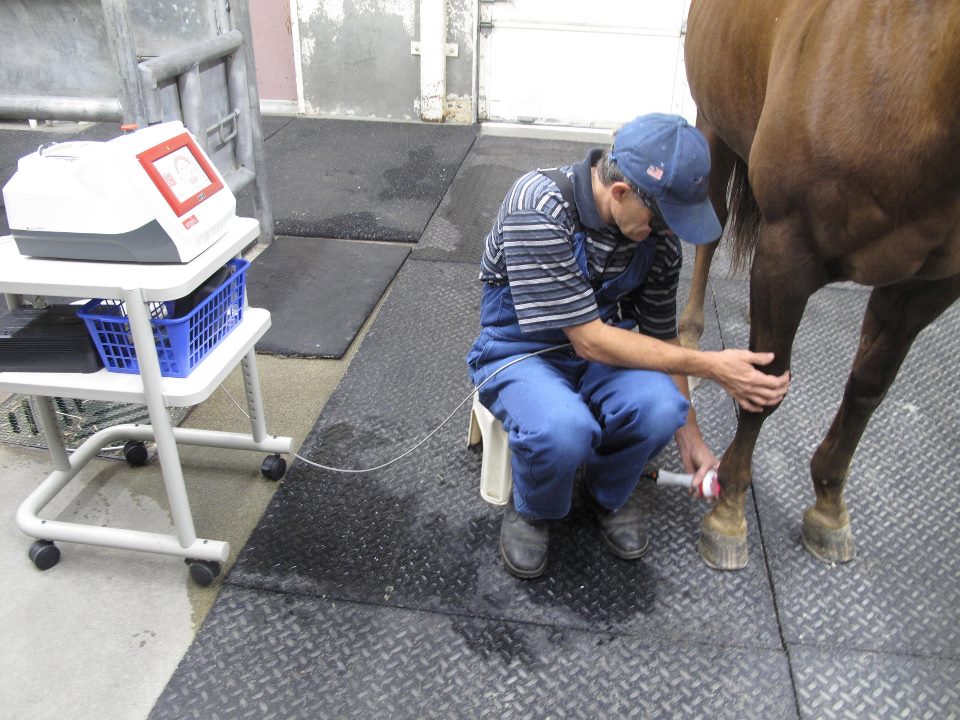Equine Therapy for Children: Psychological and Behavioral Assistance Described
Equine Therapy for Children: Psychological and Behavioral Assistance Described
Blog Article
Reviewing the Effectiveness of Laser Treatment in Equine Therapy for Injury Rehab
The analysis of laser treatment's performance in equine injury rehab depends upon multiple elements, including healing time, discomfort mitigation, and tissue regeneration. Scientific studies suggest noteworthy improvements in problems like tendonitis and osteoarthritis, credited to boosted cellular function and elevated ATP manufacturing. Vets often observe superior end results with laser therapy contrasted to conventional methods, positioning it as a vital component in equine treatment. The need for continual monitoring and personalized therapy strategies can not be overemphasized. What particular professional evidence supports these claims, and exactly how do veterinarians apply these procedures in practice?

Comprehending Laser Treatment
Laser therapy has actually come to be a pivotal tool in vet medication, especially in the treatment of equine conditions. Recognized for its non-invasive nature and efficiency, laser therapy entails the application of specific wavelengths of light to stimulate tissue repair and minimize swelling. This healing method is progressively favored for its capability to accelerate the recovery process in horses dealing with a variety of bone and joint injuries and chronic problems.
The main device behind laser therapy is its ability to improve mobile functions. When laser light penetrates the skin, it is absorbed by mitochondria, the powerhouse of cells, which results in increased production of adenosine triphosphate (ATP) This biochemical power increase helps with mobile repair service and regrowth. Additionally, laser therapy promotes vasodilation, improving blood circulation and oxygen shipment to damaged tissues, thus speeding up healing.
In equine medicine, laser treatment is specifically useful for conditions such as tendonitis, osteo arthritis, and injury recovery. The technique is lauded for its pain-relieving buildings, enabling steeds to regain wheelchair and feature more rapidly. Vets likewise appreciate its minimal adverse effects compared to various other therapy methods, making it a reputable and secure choice for equine treatment.
How Laser Treatment Works
To comprehend how laser treatment functions, it is vital to dig into the communication between light energy and organic tissues. Laser therapy, additionally known as Low-Level Laser Treatment (LLLT) or photobiomodulation, uses certain wavelengths of light to permeate tissues and stimulate cellular processes. The device hinges on the absorption of photons by cell chromophores, primarily within the mitochondria, which are essential for power production.
Upon absorption, these photons activate a series of biochemical changes, boosting mitochondrial my response function and resulting in raised adenosine triphosphate (ATP) manufacturing. This increase in ATP accelerates mobile metabolic rate, promoting tissue repair work and regeneration. Furthermore, laser therapy regulates inflammatory feedbacks by influencing cytokine levels and reducing oxidative stress and anxiety, thus reducing discomfort and swelling.
Another substantial element of laser therapy is its function in improving microcirculation. The therapy promotes vasodilation, boosting blood circulation and oxygen distribution to broken cells. This facilitates the removal of cellular particles and supports the discover this info here proliferation of fibroblasts and collagen synthesis, essential for wound recovery.
Clinical Evidence
The effectiveness of laser therapy in equine therapy has been validated via numerous medical researches, showcasing its healing potential across a variety of conditions. A research study carried out by Turner et al. (2012) demonstrated that steeds treated with low-level laser therapy (LLLT) for ligament injuries exhibited accelerated recovery compared to those receiving standard treatments.
Similarly, research by Johnson and associates (2015) focused on equine muscular tissue injuries, revealing that laser treatment substantially accelerated muscular tissue fiber regeneration and decreased muscle stiffness. Scientific evaluations have actually revealed that laser treatment can relieve persistent problems such as osteo arthritis.
Vet Insights
Veterinary experts have actually progressively identified the worth of laser therapy in equine therapy, citing both empirical evidence and firsthand experience. Dr. Jane Smith, a leading equine vet, notes that useful content laser therapy has revealed exceptional efficacy in minimizing swelling and increasing cells repair.
Vets also appreciate the versatility of laser therapy. She directs out that laser treatment can be customized to the specific demands of each steed, ensuring optimum outcomes.

Practical Considerations
A key facet of executing laser therapy in equine therapy entails recognizing the sensible considerations that ensure its efficacy and safety. It is important to choose the appropriate laser tool, as different kinds vary in wavelength, power, and infiltration deepness (Equine Therapy). Veterinarians must be well-versed in these specifications to tailor treatment protocols efficiently to every injury type
Moreover, the regularity and period of laser treatment sessions need careful preparation to optimize healing benefits while reducing any kind of prospective adverse impacts. Consistent tracking of the horse's reaction to treatment can lead essential changes in the therapy program. Developing a safe and regulated setting during treatments is likewise vital to protect against unintentional exposure to laser exhausts, which might damage both the steed and the handler.
Educating and certification of workers administering laser therapy are critical to make certain correct method and to maintain security criteria. Furthermore, preserving exact records of each session, consisting of laser setups and observed outcomes, is crucial for examining the general performance of the therapy and for making data-driven decisions.
Final Thought
Laser therapy has actually emerged as an effective technique in equine injury rehabilitation, offering substantial benefits in recovery time, pain alleviation, and cells healing. For ideal results, continual tracking and personalized therapy methods stay important in leveraging the complete capacity of laser treatment in equine care.
Report this page